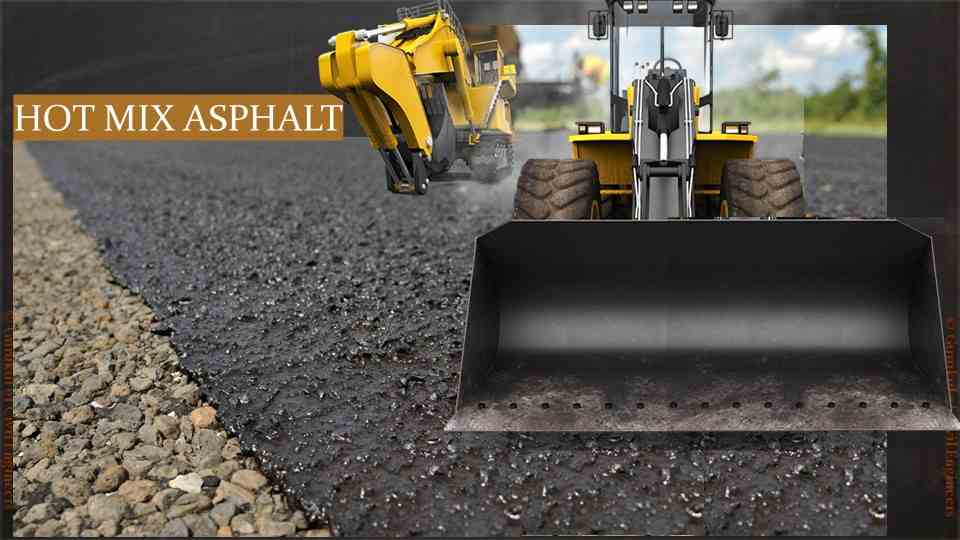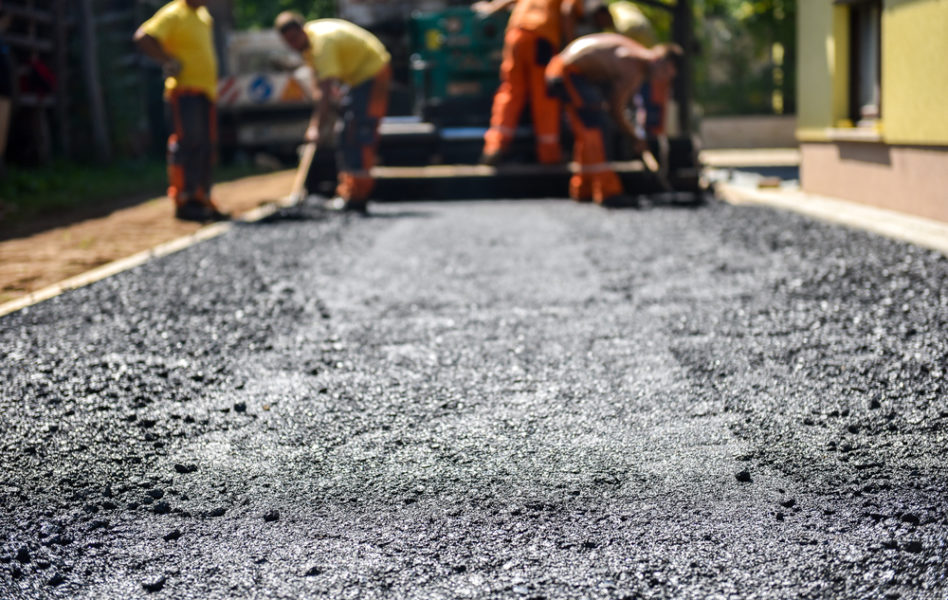Hot Mix Asphalt: The Foundation for Safe and Secure Angled Parking Lots
Hot Mix Asphalt: The Foundation for Safe and Secure Angled Parking Lots
Blog Article
Unlocking the Tricks of Warm Mix Asphalt Modern Technology
Discovering the midsts of warm mix asphalt modern technology reveals a globe where meticulous processes and precise formulations merge to form our roadways and framework. The blend of binders, accumulations, and fillers isn't merely a construction job yet a critical orchestration of durability and efficiency. As we peer right into the complex dancing of elements, a tapestry of resilience and sustainability unravels. What lies under this surface area of asphaltic mastery, and what secrets wait to be introduced in the world of leading developments?
Relevance of Hot Mix Asphalt
Hot Mix Asphalt plays an important function in modern-day framework growth due to its durability and cost-effectiveness. As the most typically utilized paving material for roads, highways, and auto parking whole lots, Warm Mix Asphalt supplies an array of advantages that add to its relevance in building and construction tasks.
The resilience of Hot Mix Asphalt stems from its make-up, which consists of aggregates, binder, and filler products that are very carefully selected and blended to satisfy particular efficiency demands. Overall, the relevance of Hot Mix Asphalt in infrastructure growth can not be understated, as it proceeds to be a foundation of modern building practices.
Elements of Asphalt Mixes
The make-up of asphalt blends consists of thoroughly picked accumulations, binder, and filler materials that are critical for achieving particular efficiency needs. Accumulations are the primary component of asphalt mixes, supplying toughness and security. The binder, typically bitumen or asphalt cement, holds the aggregates together and supplies adaptability and toughness to the mix.
The mix and proportion of these components play a considerable role in determining the high quality and efficiency of the asphalt mix. Designers very carefully make the mix to fulfill specific needs, thinking about aspects like traffic volume, climate problems, and pavement life expectancy. Proper choice and harmonizing of accumulations, binder, and fillers are vital for producing long lasting, resilient asphalt pavements.
Mixing and Production Strategies

When the accumulations are chosen, the binder, typically asphalt cement, is contributed to bind the materials with each other. The binder's quality and amount significantly affect the mix's strength, versatility, and resistance to ecological variables. Additionally, fillers like hydrated lime or Portland cement might be included to enhance certain features of the asphalt mix, such as its workability or moisture resistance.
Throughout production, the accumulations and binder are warmed, generally between 250-325 ° F(121-163 ° C ), to facilitate blending and make certain appropriate finishing of the aggregates. The blending procedure has to be complete to attain an uniform combination that promotes the desired performance attributes of the asphalt. Various methods, such as batch blending or drum blending, are utilized to achieve constant and high-grade asphalt blends for building tasks.
Factors Influencing Asphalt Efficiency
Elements affecting asphalt efficiency encompass a series of variables that affect the toughness, durability, and total quality of asphalt sidewalks. One crucial variable is the quality of products used in the asphalt mix. The type and resource of aggregates, the binder high quality, and the additives all play a considerable duty in identifying the performance of the asphalt sidewalk. The rank of aggregates is vital as it influences the mix's workability, resistance, and stability to splitting and rutting. site

Environmental conditions likewise influence asphalt efficiency. Temperature level variants, wetness seepage, and website traffic tons can all affect the structural stability of the sidewalk. Style considerations, such as sidewalk thickness and drainage, are important in guaranteeing the lasting efficiency of the asphalt sidewalk. By thoroughly thinking about these factors, designers and professionals can enhance asphalt performance and enhance the service life of pavements.
Sustainable Practices in Asphalt Innovation

WMA enables for the manufacturing and positioning of asphalt blends at reduced temperature levels compared to conventional hot-mix asphalt, resulting in reduced energy consumption and greenhouse gas exhausts. The use of porous asphalt blends can assist alleviate stormwater drainage concerns by enabling water to penetrate through the sidewalk and into the ground, promoting all-natural water filtration and reenergize procedures.
Verdict
To conclude, hot mix asphalt modern technology plays a vital duty in modern facilities growth due to its durability and cost-effectiveness. By meticulously stabilizing parts, using appropriate blending techniques, and taking into consideration different factors, designers can produce high-grade asphalt blends that endure rush hour tons and severe weather conditions. Accepting sustainable practices, such as using recycled products and warm-mix technologies, further boosts the environmental kindness of asphalt modern technology.
Blending and production techniques in warm mix asphalt innovation involve the exact mix and processing of accumulations, binder, and fillers to develop a durable and high-performance asphalt mix.Factors influencing asphalt performance encompass a range of variables that affect the sturdiness, longevity, and general quality of asphalt pavements. Sustainable practices in asphalt modern technology encompass different initiatives aimed at minimizing the environmental influence of asphalt manufacturing and paving procedures. By incorporating recovered asphalt pavement (RAP) and recycled asphalt roof websites shingles (RAS) right into new asphalt blends, the sector can significantly lower the intake look at here now of raw materials and energy, while also lowering landfill waste.
WMA permits for the manufacturing and placement of asphalt mixes at reduced temperatures contrasted to conventional hot-mix asphalt, resulting in decreased energy intake and greenhouse gas emissions.
Report this page